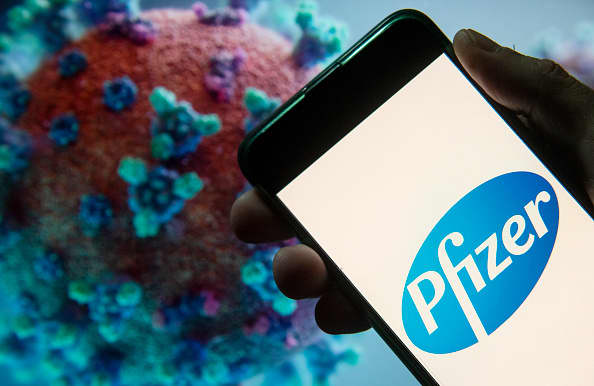In this photo illustration the American multinational pharmaceutical corporation Pfizer logo seen displayed on a smartphone with a computer model of the COVID-19 coronavirus on the background.
Budrul Chukrut | SOPA Images | Getty Images
Pfizer and BioNTech surprised many industry watchers on July 27 when they announced they would conduct a large-scale study of a vaccine for Covid-19. The surprise? The vaccine that would be tested in a 30,000-patient trial wasn’t the one for which the companies had presented data on July 1.
The reason, the companies said, was that a second vaccine seemed to generate a similar immune response, but fewer side effects. On Thursday, they posted the results from all 332 people who received either vaccine, referred to as vaccines B1 or B2 — and indeed, B2 recipients experienced markedly fewer adverse events tied to the vaccine.
“Obviously, the better tolerated the vaccine, the more I think it will encourage public acceptance of a broad immunization,” said William Gruber, the senior vice president of vaccine clinical research and development at Pfizer. “Both would have been great candidates. We were fortunate that B2 actually satisfied having both a favorable immune profile and fewer reactions.”
The study tested doses of each vaccine ranging from 10 micrograms to 100 micrograms. The 30-microgram dose of B2 is being taken forward in clinical trials.
With the original vaccine, called BNT162b1, or B1 for short, patients between the ages of 18 and 55 had adverse events thought to be related to the vaccine 50% of the time at the 30-microgram dose. Those between the ages of 65 and 85 had related adverse events 16.7% of the time.
For the second vaccine, BNT162b2, or B2, patients between 18 and 55 had adverse events thought to be related to the vaccine 16.7% of the time, and no adverse effects thought to be related to the vaccine were reported in those between the ages of 65 and 85.
Both vaccines use mRNA — the genetic messenger the body uses to make the DNA code into proteins — packaged inside a fatty capsule, called a lipid nanoparticle, that allows it to get into cells. The mRNA instructs cells to make a protein, which then triggers the immune system into action. For the B1 vaccine, the mRNA coded for the part of a protein on the SARS-CoV-2 virus that binds to a receptor on human cells in order to gain entry to them. The B2 vaccine makes the entirety of this protein, known as the spike protein.
Using the full spike protein may allow the immune system to figure out more ways to detect and attack the virus. Chemical modifications to the mRNA may also explain some of the difference. Although the same dosage, by weight, was given to patients with each vaccine, the B2 vaccine would include fewer particles, because the full-length mRNA is heavier.
The side effects tracked were mostly those one would expect from a vaccine injection, including soreness at the injection site, fever, chills, headache, and muscle or joint pain. No older adult who received B2 reported redness or swelling at the injection site.
The average level of antibodies to the virus in older adults was only 41% that seen in younger participants. However, it was still higher than the level of antibodies seen in recovered patients, the authors said.
All patients in the study of B2 were white and non-Hispanic, with more older women than older men participating. The younger patients were a median of 37 years old, while the older ones were a median of 69.
Pfizer has said that some data from its large study of the B2 vaccine could come as early as October.

